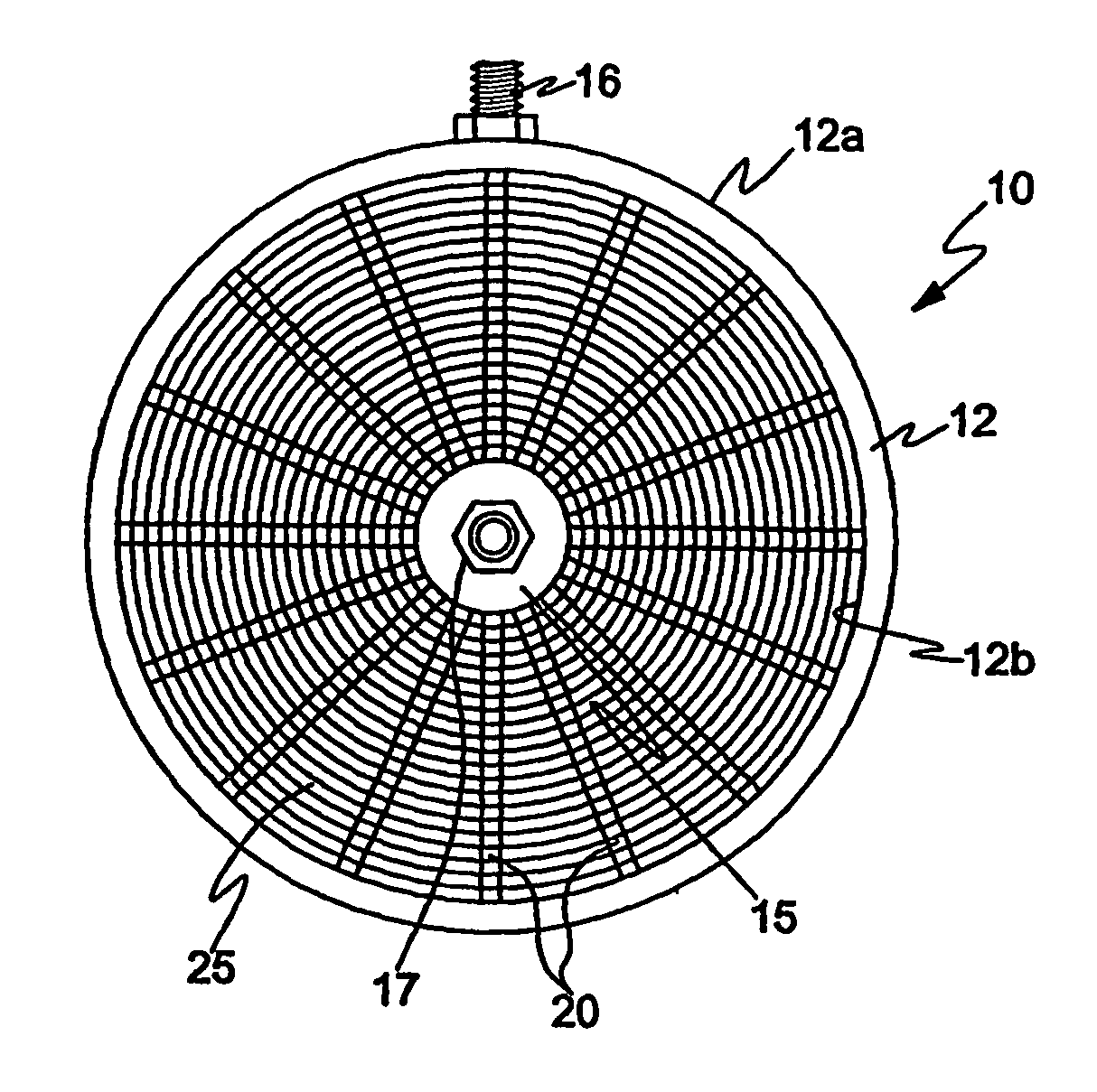Radial flow heat exchanger
a heat exchanger and radial flow technology, applied in the field of improved radial flow heat exchangers, can solve the problems of relatively high manufacturing cost and complex shape of heat exchangers, and achieve the effects of efficient heat transfer, efficient heat transfer, and efficient heat transfer
- Summary
- Abstract
- Description
- Claims
- Application Information
AI Technical Summary
Benefits of technology
Problems solved by technology
Method used
Image
Examples
Embodiment Construction
Referring to the drawings which illustrate a preferred form of the invention, FIG. 1 shows a radial flow heat exchanger 10 and which includes an outer fluid tight hollow ring 12 and a fluid tight central hub 15 disposed radially inwardly of the ring 12. For explanation purposes, a heat exchanger in which the flow is radially inward will be described, although it is understood that the flow could be radially outward as illustrated in FIG. 1a, the arrows indicating the direction of flow.
The ring 12, illustrated as generally circular, includes a fluid inlet fitting 16, sealed thereto, for introducing fluid into the hollow ring, the latter effectively forming a manifold. The inlet fitting may be brazed or welded to the ring. The ring itself may be circular in cross-section or polygonal, e.g., square, rectangular and the like, and composed of a thermally conductive material, preferably a metal. If desired, depending on the nature of the fluid, the ring and the other components of the ...
PUM
| Property | Measurement | Unit |
|---|---|---|
| heat conducting | aaaaa | aaaaa |
| flow length | aaaaa | aaaaa |
| length | aaaaa | aaaaa |
Abstract
Description
Claims
Application Information
 Login to View More
Login to View More - R&D
- Intellectual Property
- Life Sciences
- Materials
- Tech Scout
- Unparalleled Data Quality
- Higher Quality Content
- 60% Fewer Hallucinations
Browse by: Latest US Patents, China's latest patents, Technical Efficacy Thesaurus, Application Domain, Technology Topic, Popular Technical Reports.
© 2025 PatSnap. All rights reserved.Legal|Privacy policy|Modern Slavery Act Transparency Statement|Sitemap|About US| Contact US: help@patsnap.com



